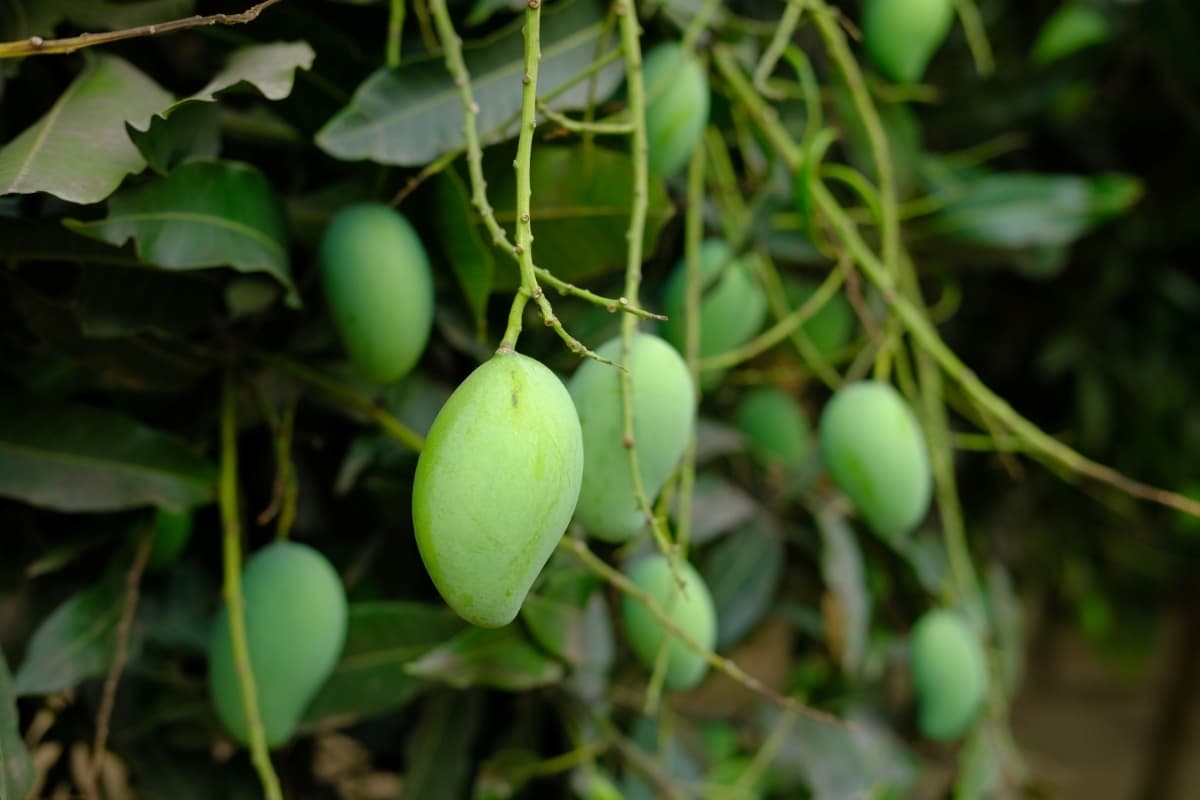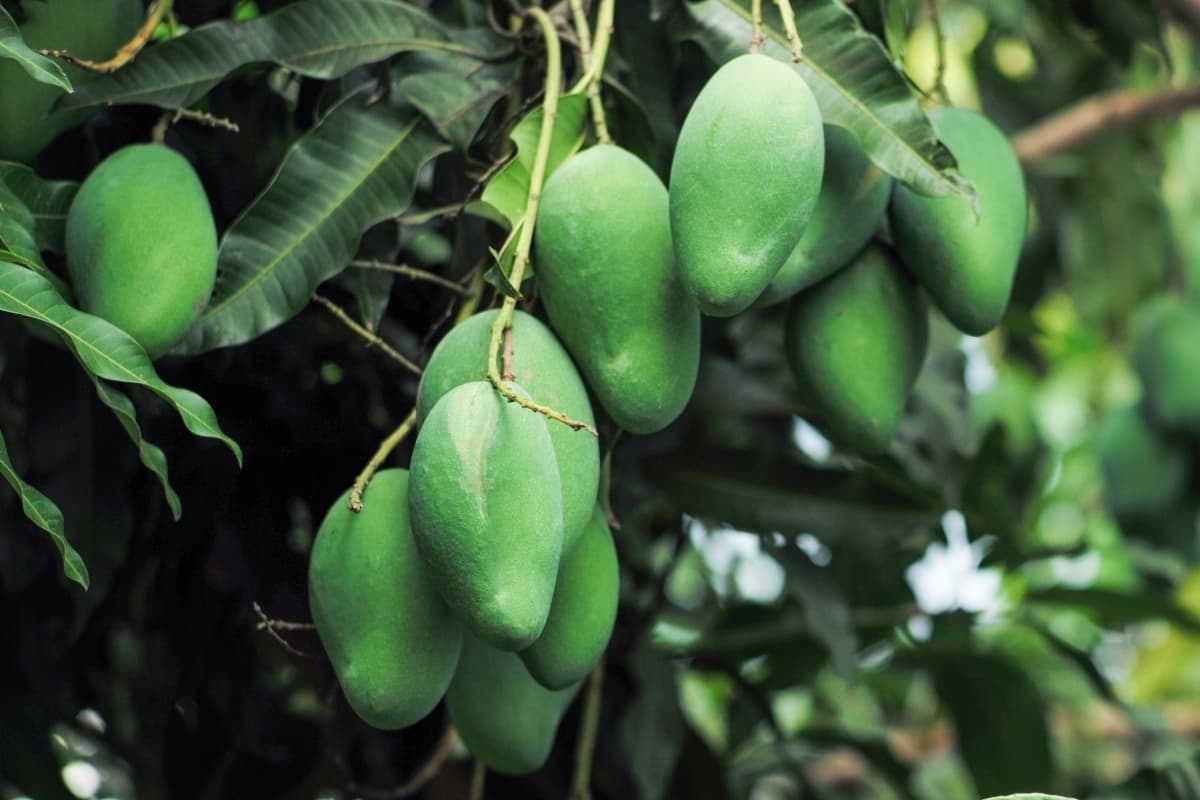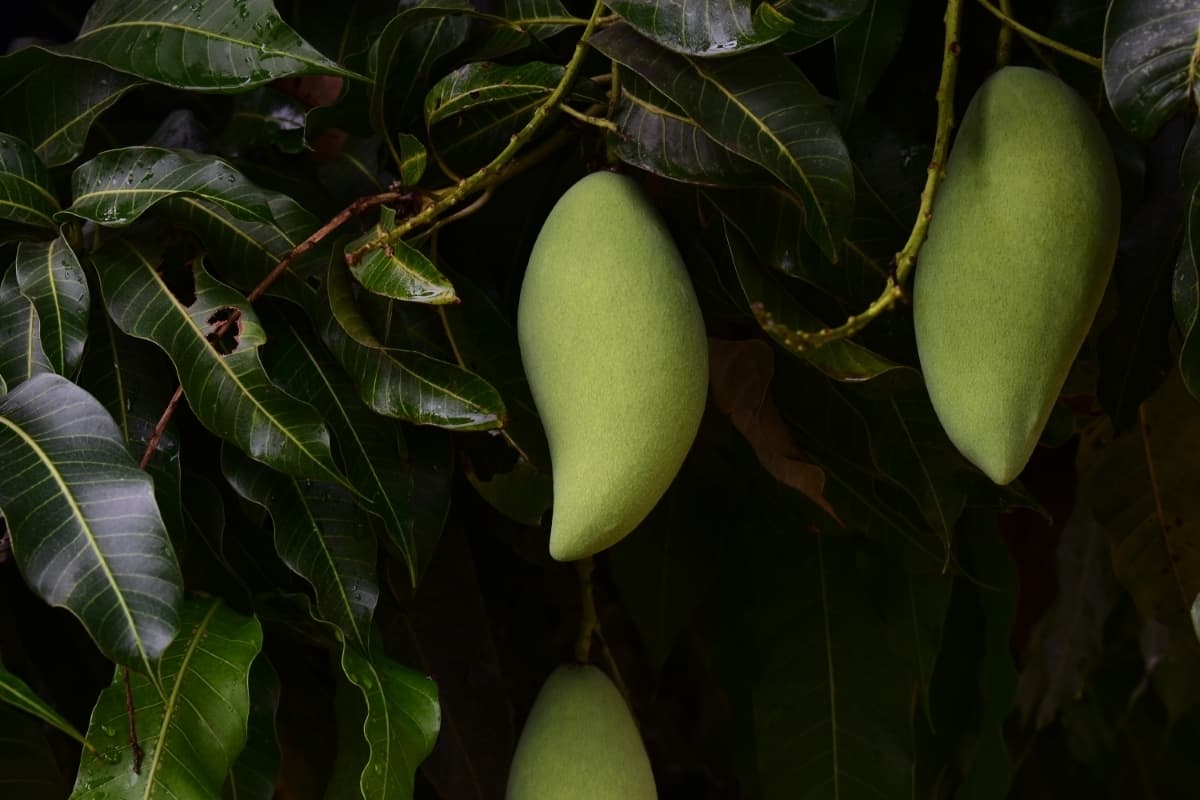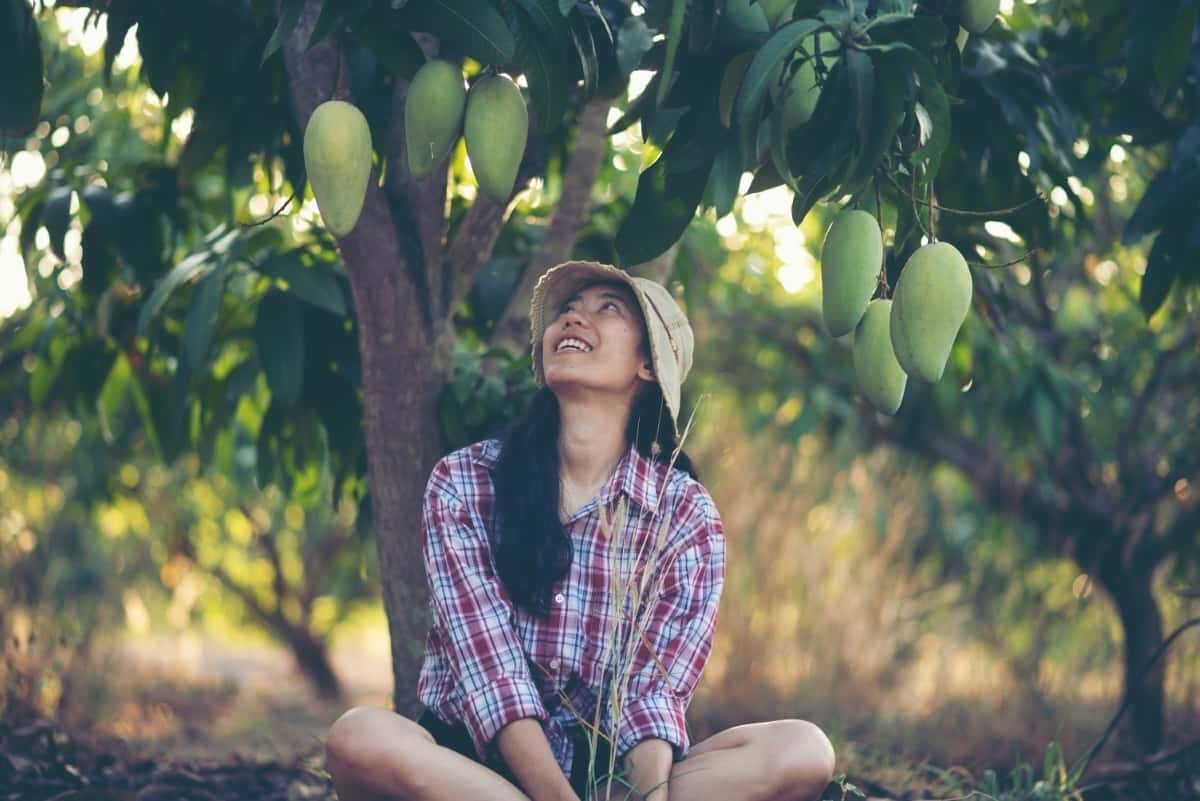Elevate your mango tree care with our guide on the best fungicides. Explore effective treatments, including the top 10 fungicides renowned for their potency. From broad-spectrum options to eco-friendly choices, discover unparalleled disease control. Combat leaf spots and other ailments with confidence, ensuring your mango trees thrive. Unveil the secrets to systemic fungicides and find the perfect spray for optimal disease prevention.

Revolutionize your approach to mango tree health with these meticulously selected and proven fungicide solutions for a bountiful harvest and flourishing orchard. Mango trees are susceptible to a number of fungal diseases, such as anthracnose, powdery mildew, Moko disease, and stem end rot. These diseases can cause leaf spots, fruit drops, fruit rot, and even tree death. To prevent and treat these diseases, you need to apply the best fungicide for mango trees regularly.
Best Fungicide for Mango Tree
Copper Fungicides: Broad-Spectrum Protection
Copper fungicides are one of the most widely used fungicides for mango trees. They have broad-spectrum activity against many fungal pathogens, such as anthracnose, powdery mildew, sooty mold, and bacterial canker. Copper fungicides work by disrupting the enzyme systems of the fungi, preventing them from growing and spreading. Copper fungicides are available in different formulations, such as copper hydroxide, copper oxychloride, copper sulfate, and copper octanoate. The recommended dosage of copper fungicides for mango trees is 2 to 4 kg/ha.
Mancozeb: Multi-Site Disease Control
Mancozeb is another popular fungicide for mango trees. It is a contact fungicide that inhibits the respiration of the fungi, causing them to die. Mancozeb is effective against differnt range of fungal diseases, such as anthracnose, powdery mildew, Alternaria leaf spot, stem end rot, and dieback. Mancozeb is also compatible with other fungicides, such as carbendazim and azoxystrobin. The recommended dosage of mancozeb for mango trees is 2 to 3 kg/ha.
Carbendazim: Effective Against Anthracnose
Carbendazim is a systemic fungicide that penetrates the plant tissues and kills the fungi from within. Carbendazim is especially effective against anthracnose, which is one of the most common and destructive fungal diseases of mango trees. Anthracnose causes black spots on leaves, flowers, and fruits, reducing their quality and marketability. Carbendazim works by interfering with the cell division of the fungi, preventing them from multiplying. The recommended dosage of carbendazim for mango trees is 0.5 to 1 kg/ha.
Azoxystrobin: Systemic and Preventive Action
Azoxystrobin systemic fungicide that belongs to the strobilurin group. It has both preventive and curative effects on fungal diseases of mango trees. Azoxystrobin works by blocking the electron transport chain of the fungi, stopping their energy production and growth. Azoxystrobin is effective against anthracnose, powdery mildew, Alternaria leaf spot, stem end rot, and red rust. Azoxystrobin also enhances the plant’s resistance to stress and improves its photosynthesis and yield. The recommended dosage of azoxystrobin for mango trees is 0.1 to 0.2 kg/ha.
Propiconazole: Fungal Disease Management
Propiconazole is a systemic fungicide that belongs to the triazole group. It has both preventive and curative effects on fungal diseases of mango trees. Propiconazole works based on inhibiting the synthesis of ergosterol, a component of the fungal cell membrane. Propiconazole is effective against anthracnose, powdery mildew, stem end rot, dieback, and black rot. Propiconazole also improves the fruit quality and shelf life of mangoes. The recommended dosage of propiconazole for mango trees is 0.1 to 0.2 kg/ha.
In case you missed it: Common Mango Tree Diseases: Symptoms, Identification, Treatment, Control, and Management

Trifloxystrobin: Broad-Spectrum Fungicide
Trifloxystrobin is a strobilurin fungicide that has a broad-spectrum activity against many fungal pathogens, including anthracnose, powdery mildew, scab, rust, and leaf spot. It works by interfering with the respiration of fungi, causing them to die. Trifloxystrobin can be applied as a foliar spray or a soil drench, depending on the disease and the stage of the crop. It has a systemic and translaminar action, meaning it can penetrate and move within the plant tissue, protecting both sides of the leaf.
Myclobutanil: Targeted Disease Suppression
Myclobutanil is a triazole fungicide that has a targeted activity against specific fungal diseases, such as powdery mildew, scab, and rust. It works by inhibition of synthesis of ergosterol, a vital component of fungal cell membranes, causing them to rupture and leak. Myclobutanil applied as a foliar spray or a soil drench, depending on the disease and the stage of the crop. It has a systemic action, meaning it can move within the plant tissue, protecting the inside.
Tebuconazole: Broad-Range Fungal Control
Tebuconazole is another triazole fungicide that has a broad-range activity against many fungal diseases, including anthracnose, powdery mildew, scab, rust, and leaf spot. Inhibiting the synthesis of ergosterol, a component made by fungal cell membranes, causing them to rupture and leak. Tebuconazole can be applied as a foliar spray or a soil drench, depending on the disease and the stage of the crop. It has a systemic and curative action, meaning it can move within the plant tissue and kill existing infections.
Difenoconazole: Advanced Disease Protection
Difenoconazole is another triazole fungicide that has advanced activity against many fungal diseases, including anthracnose, powdery mildew, scab, rust, and leaf spot. Inhibiting the synthesis of ergosterol, component consist of fungal cell membranes, causing them to rupture and leak. Difenoconazole can be applied as a foliar spray or a soil drench, depending on the disease and the stage of the crop. It has a systemic and preventive action, meaning it can move within the plant tissue and prevent new infections.
Hexaconazole: Systemic Fungicide Option
Hexaconazole is another triazole fungicide that has a systemic activity against many fungal diseases, including anthracnose, powdery mildew, scab, rust, and leaf spot. Inhibiting the synthesis of ergosterol, a vital constituent of fungal cell membranes, causing them to rupture and leak. Hexaconazole can be applied as a foliar spray or a soil drench, depending on the disease and the stage of the crop. It has a systemic and eradicant action, meaning it can move within the plant tissue and eliminate existing infections.
In case you missed it: 10 Common Mango Tree Damaging Pests: Symptoms, Identification, Treatment, Control, and Management

Top 10 Fungicides for Mango Trees
| Fungicide Name | Dosage | Effectiveness |
| Copper Fungicides | 2-4 kg/ha | Broad-Spectrum Protection |
| Mancozeb | 2-3 kg/ha | Multi-Site Disease Control |
| Carbendazim | 0.5-1 kg/ha | Effective Against Anthracnose |
| Azoxystrobin | 0.1-0.2 kg/ha | Systemic and Preventive Action |
| Propiconazole | 0.1-0.2 kg/ha | Fungal Disease Management |
| Trifloxystrobin | 0.1-0.2 kg/ha | Broad-Spectrum Fungicide |
| Myclobutanil | 0.1-0.2 kg/ha | Targeted Disease Suppression |
| Tebuconazole | 0.1-0.2 kg/ha | Broad-Range Fungal Control |
| Difenoconazole | 0.1-0.2 kg/ha | Advanced Disease Protection |
| Hexaconazole | 0.1-0.2 kg/ha | Systemic Fungicide Option |
In case you missed it: Mango Gummosis Disease Management: Symptoms, Treatment, Chemical, Biological, Natural, and Organic Control

Conclusion
Elevate your mango tree care with the best fungicides listed above, offering a 100% effective treatment against various diseases. From broad-spectrum protection to targeted disease suppression, these top 10 fungicides ensure your mango tree thrives, delivering delicious fruits while maintaining optimal health.
- Beneficial Insects in Pest Management
- Natural Solutions for Pest Control in Flower Gardens
- Types of Fungicides Used in Agriculture
- Common Issues in the Fruit Development Stage of Pomegranate Farming
- Fruit Development Issues in Papaya: Easy Solutions and Treatment
- Soil-Borne Diseases and How to Protect Your Plants
- Practices to Prevent Disease Spread in the Garden
- From Wilted to Thriving: How to Treat Root Rot Naturally in Houseplants
- Natural Remedies to Cure Brown Spots on Fig Tree Leaves